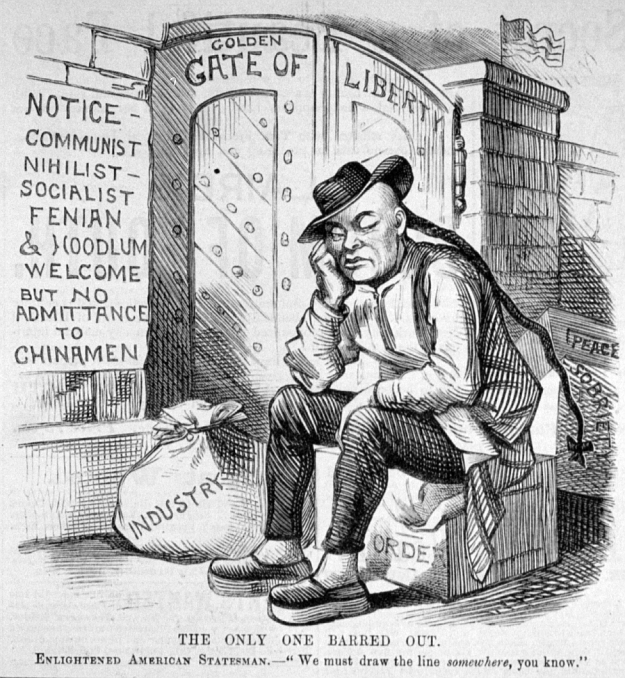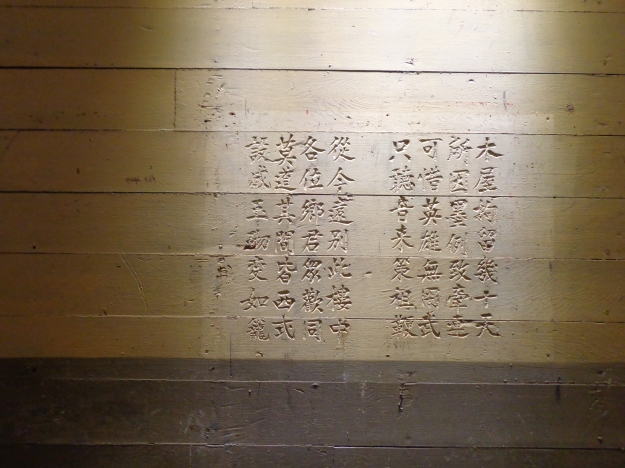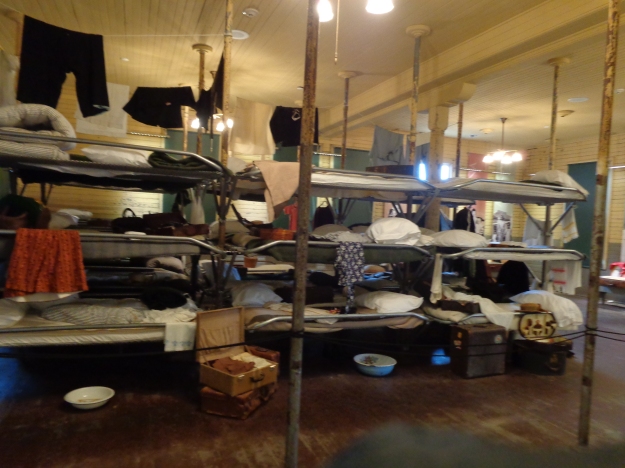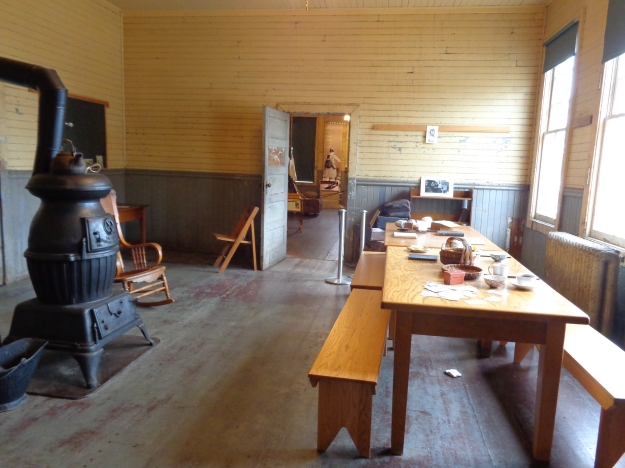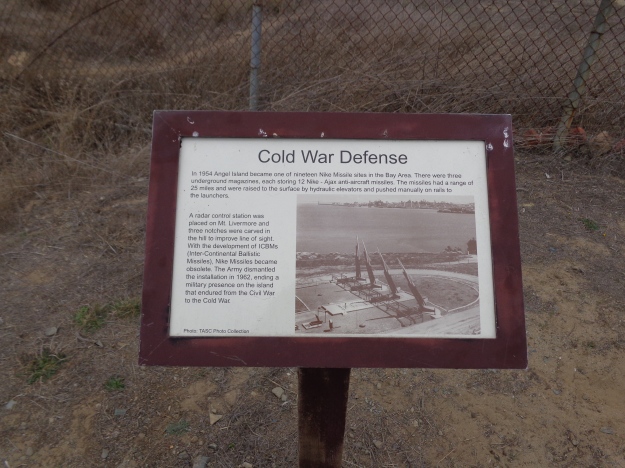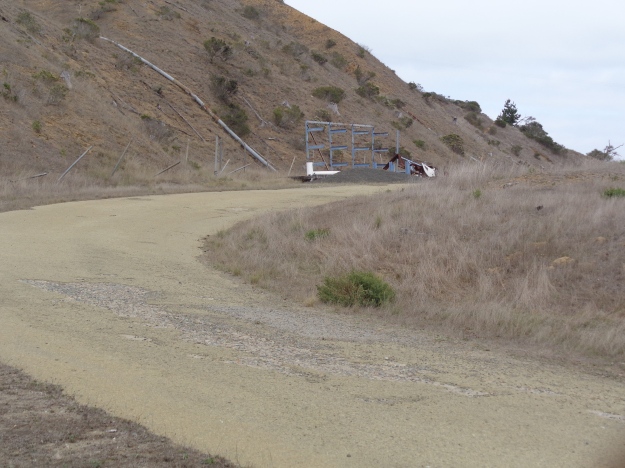This past weekend (June 17-18) Oplevelsescenter Vestvolden (Experience Centre Western Ramparts) hosted an amazing event, “The War History Festival”. I believe it is the first of its kind in Denmark. it took place over Saturday and half of Sunday, it is a pity it is not any longer but it is cut short Sunday to allow the organisers to strike camp and head home as most are volunteers. The setting is very unique, it is a museum which is built into the old fortifications that protected Copenhagen. These were built during the late 19th century.
The festival itself took place along a 1.2 km path which runs along the bunkers. it consisted of a number of reenactment camps from groups all over Denmark. it was all free and the volunteers did an amazing job. The camps were laid out in chronological order, starting with Roman soldiers and ending with Soviet special forces. Every camp has a year assigned to it, I was there with the historical fencing club representing 1570.
I have been in contact with a few reenactment groups in Denmark but I had no idea that reenactment was this big. There was everything from Roman legionaries, vikings, historical fencing, 1807 (Napoleonic Wars), 1864 Schleswig War and American Civil War, WWI Germans and WWII both British and Germans represented as well as 1962 Soviets with plenty of vehicles.
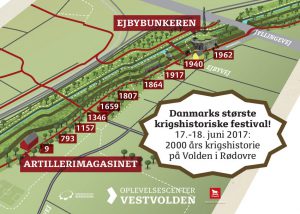
Early draft, as more and more reenactment groups joined, camps were added or removed
Can You Celebrate War?
A festival over war history seems like such a contradiction. How can we celebrate the killing of others? It could easily sound like a way to romanticize or glorify war but I believe it is quite on the contrary. For us to understand history we need to get into the mind of people who lived in those times because otherwise we shall never be able to understand it. If we only apply our modern thinking and ethics, we will naturally simplify and draw wrong conclusions. To understand how slavery could exist for thousands of years as an institution, we need to understand how people in those times thought, not simply brush it off as but we have gotten smarter, more modern etc.
I therefore believe that a gathering of reenactment groups like this is an important way of getting people a little bit closer to what life would have been like. Reenactment I feel is still very small in Denmark although growing. It is important not to confuse it with role-playing. While role playing is about dressing up and sometimes in historical periods, the role playing is more about creating a story with villains and heroes. Reenactment is about living history. It is the recreation of a life style and mind-set through trying to feel in on your own body. In history books we are often only concerned with the broad lines, the generals and the big battles, but forget the ordinary soldier.
Reenactment for me is the rediscovery of history. It allows us to feel and understand the daily life of ordinary people. Most reenactment concentrates on war I personally believe it is because often we humans are drawn towards the conflict, the tearing of societies and the drama, because of the contrasts and questions that those pose to us, how would we have reacted, what was it like?
So I do not feel we try to celebrate war itself, rather, we try to understand strength and horror of the people who lived in trying times.
Reenactors in Denmark
One of the things I liked about the festival was the big turnout of reenactor groups. many of these I did not even know existed. I only managed to talk to a few of the reenactors and as a presenter myself, I unfortunately did not have a chance to talk to that many other but i wanted to highlight a few.
For American Civil War “Blue and Gray” put on a very good fight show on Sunday. I believe the roar of cannons were something that really shook the audience. The spectacle of deafening noise and nauseating smell of powder is something that cannot be understood from movies. This is where I truly feel reenactment comes into its true potential. Blue and Gray is particularly interesting because they try to portray companies which had large contingents of Scandinavian immigrants so although we are far from the battlefields of 1860s USA there is still a connection to Denmark.
“Regimentet” is a group that portrays the ordinary occupation troops in Denmark during WWII and were represented under 1940 (the year of the invasion). The dedication to details of these reenactors is amazing. I have thought to join them more than once.
Other WWII groups were “WWII Tommies” portraying British troops under WWII and “Danforce”. “Danforce” deserves a lot of attention as they represent a unit that many people may not even have heard about. During WWII a Danish force was formed in neutral Sweden and stood ready to enter back into Denmark. This force certainly deserves a blog post here at a later stage being almost forgotten.
“Westfront 1916” is a WWI reenactment group, I did not managed to get to speak with them but I think it is very interesting, specially because Denmark was not part of WWI.
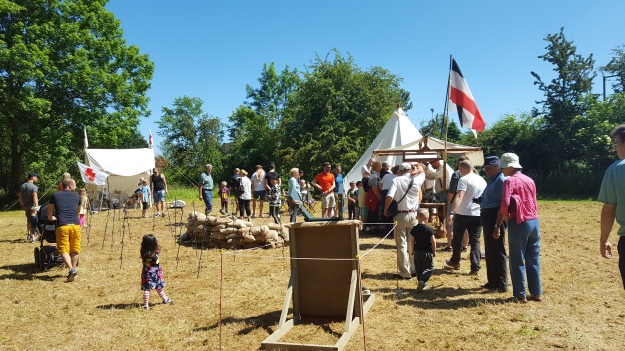
The German WWI camp with field hospital
1570
Copenhagen Historical Fencing Club (KHFK) was present at the festival under the year 1570. Now that year was not chosen for any particular event or war but rather by a book: “Art of Combat” by Joachim Meier. He was a German fencing master and in that year published a very comprehensive book on a number of different weapons such as longsword and early rapier among others.
It is a real honour to be invited to the event as I feel we are slightly off as we are not reenactors as such. KHFK practices HEMA (Historical European Martial Arts) which is an umbrella term for recreating European fighting based on old manuscripts (which is where Meier is so important). Many of the manuals do however not focus on war, rather they focus on the duel or self-defence is being attacked in a more day-to-day life setting. This means that the person defending himself typically only have what he would practically and comfortable be carrying. So that means no armour, as a normal person would likely not go shopping wearing an armour and also it means weapons have to be easy to carry, typically what could be carried hanging from a belt (that keeps both hands free for all the regular daily stuff). A good example is the shield, while it was recognised that a shield was very useful, a big shield, simply was not practical and would likely have to be carried on the back, meaning it was slow to get out and its was a burden to carry for the odd chance of getting robbed. Bucklers are much smaller shields which can be carried suspended from a belt (see below for pictures).
Fighting an armoured opponent is a different game and generally not covered in our ways of training as it is very difficult to simulate in full contact sparring. To defeat armour one has to stab at the openings where the armour does not protect and that is inherently very dangerous and no safe way of doing that has yet been found.
For our stand it consisted of two parts; a weapon display over which we could talk and a fighting area, where we would show off sparring. While the weather was lovely for an outdoor event, I also thought it killed off a bit of enthusiasm for fighting in a thick fencing jacket as it gets really warm. With longsword and sword and buckler (small round shield) generally being the most popular in the fencing club and no other rapier fencers, I decided to rather show and tell than fight.
Fencing in the Spot Light
For me as a participant I love to show off simple ideas and treat misunderstandings. While I would love to get more advanced I also know that it is likely too difficult to grasp as many people would not have held a steel blade before.
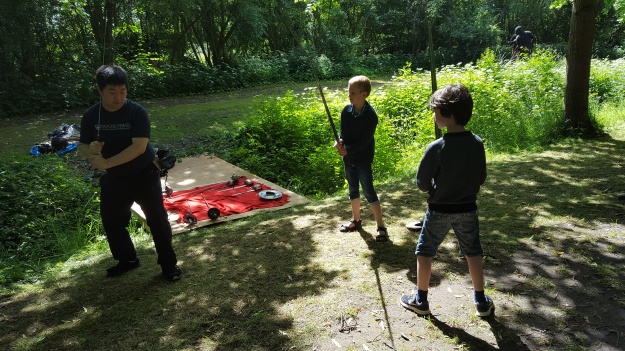
Learning to handle the sword and do foot work
I managed to teach a bit of basic stance and foot work, that can be taught in short 5 minute lessons which is about the attention span of a 5 year old when there are so many other things going on. I find that only the most basic stuff does well if attempting to teach.
There is a lot of footwork and stance involved in fencing, so it actually a good place to start. The feet are typically placed at a 90 degree angle, so I can move back and forth without stumbling over my own feet, also if I need to move in a hurry. I like to bend in the knees to get a good stable position to fight from. If fighting with weapons that only has a simple cross guard such as the “two-handed” longsword or medieval arming swords, the sword hand is generally held back unless attacking or defending. With weapons with more complex hand protection weapons are usually held out in front of me for reach. I believe such things are easy to grasp and convey and serves as great appetizers if people are interested.
While we gathered a good crowd over the whole day, I think the biggest exciment for people was to be allowed to hold the weapons. Swords to most people are surprisingly light although wielding them often seems a bit of exercise, that is because most modern people to not use their underarms very much any more but those are actually some of the muscles used most for swinging. Weapons themselves are around 1 kg for one-handed swords (some a bit lighter and some a bit heavier), humans around the world and across history may have varied in size but that seems a good weight. Longswords are used mostly in two hands and weigh around 1.5 kg.
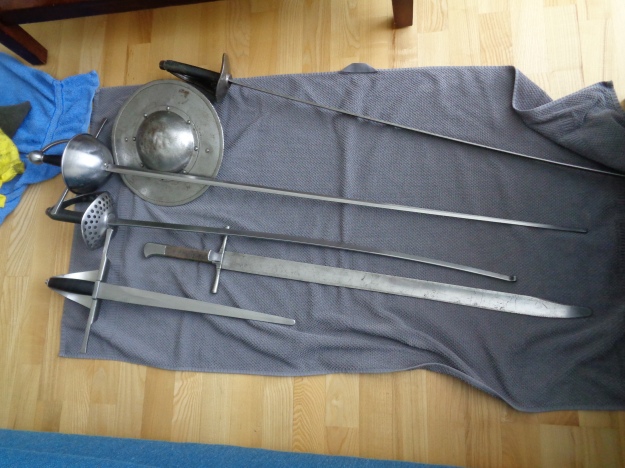
A bit of weapon maintenance after the show. All these weapons are one handed weapons at a weight of around 1 kg. Note the small shield known as a buckler
Links at the bottom for more on HEMA.
Special Thanks
Thank to Oplevelsescenter Vestvolden for hosting the event. I am looking forward to next year (the dates will be June 16-17). I really hope this will be a yearly event going forward. It was great fun presenting and great to see so many other people being so passionate about reenactment.
Some suggestions for next year, it would be better if the audience was guided more into the camps either by a presenter or sign posts. While the path is lush, green and beautiful, it is flanked by ditches which makes a natural barrier to the audience and people are reluctant to cross. I would like to invite the audience more into the camps for more interaction. For the battle recreations, better speaker systems around the whole battle area would be great, it is some very good presentations but hard to hear over the noise of battles. Also perhaps try to give key reenactors a microphone such as commanders, I know it does not look great but it would help the audience understand.
See you next year!
Links:
For more on Oplevelsescenter Vestvolden see:
KHF 2023
For more information about Copenhagen Historical Fencing Club, visit the club at http://www.KHFK.dk
A lot more information on HEMA can be found on my previous blog posts:
HEMA at the Copenhagen Medieval Market
Historical Fencing and HEMA












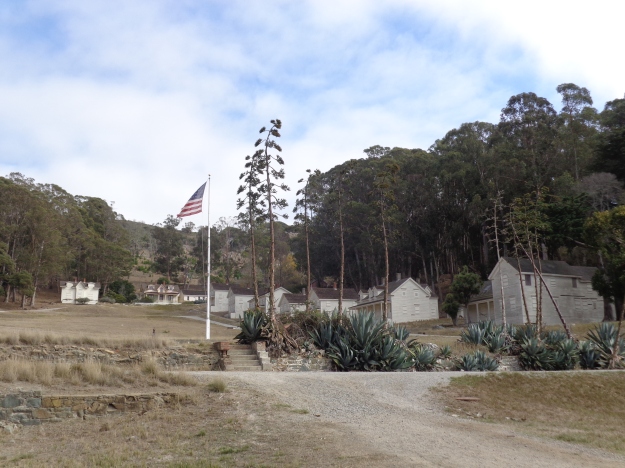 Angel Island was named so by the Spanish explorers who first brought a European presence to the area. Prior to this the island that been used as a fishing and hunting ground by native Americans. Following colonizaion the island along with a lot of the area was used for cattle ranching but with the advent of the American Civil War the Union generals became worried that Confederate raiders would attack San Francisco and decided to build two gun batteries to protect the island. This was later augmented by an infantry garrison which became known as Camp Reynolds (later known as West Garrison). This garrison played an active part in the later subjugation of the Native Americans in the West.
Angel Island was named so by the Spanish explorers who first brought a European presence to the area. Prior to this the island that been used as a fishing and hunting ground by native Americans. Following colonizaion the island along with a lot of the area was used for cattle ranching but with the advent of the American Civil War the Union generals became worried that Confederate raiders would attack San Francisco and decided to build two gun batteries to protect the island. This was later augmented by an infantry garrison which became known as Camp Reynolds (later known as West Garrison). This garrison played an active part in the later subjugation of the Native Americans in the West.
